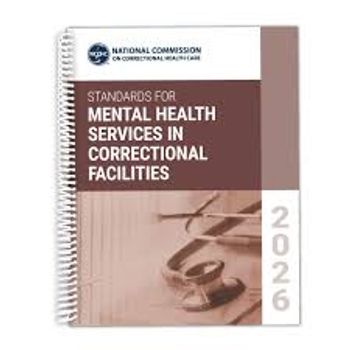
- Vol 31 No 5
- Volume 31
- Issue 5
The Rise in Emergency Psychiatry
Emergency psychiatry is helping to redefine acute mental health treatment-facilitating timely access, in less restrictive, outpatient levels of care, for patients in crisis.
BRIEF COMMUNICATION
Not long ago, in many parts of the country, mental health care only took place in 2 locations: outpatient offices or inpatient wards. But you would be far less likely to hear that now. Emergency psychiatry services, which can be delivered virtually anywhere-via mobile teams, in crisis stabilization units, or over the Internet via telemedicine-have spread rapidly across the nation.
Emergency psychiatry is where acute mental health care, the legal system, emergency medicine, police work, and the sequelae of substance abuse intersect in a sometimes dizzying, always fascinating, “open-24-hours-a-day” discipline. The various hats worn by emergency psychiatry clinicians include triage, medical screening, targeted pharmacology, crisis intervention, consultation for other disciplines, referral and linkage, crisis stabilization, supportive psychotherapy, family therapy, and short-term case coordination-all tied together with a goal of collaborative, compassionate, noncoercive care, and all occurring over minutes, rather than days.
Still a relatively nascent subspecialty, emergency psychiatry continues to grow in stature. Fellowship programs are now offered at a number of major medical centers. Several original comprehensive emergency psychiatry textbooks have been published in the past few years, and the 4th edition of the exhaustive, 3000-page textbook Psychiatry, by Tasman and colleagues,1 which will be released this year, will for the first time contain an extensive, multi-chapter section dedicated solely to emergency psychiatry topics. [for the 3rd edition,
A leading factor that drives the growth in this specialty has been the recourse it provides to the dwindling number of inpatient psychiatric beds in the US (a dilemma recently the subject of major media scrutiny, even featured on the
Given these lengthy delays, this model now seems to be rather misdirected and outdated. It is comparable to having a patient with an asthma attack sit in an ED and wait for an inpatient bed, finally get hospitalized, and only then be given inhaler treatment.
In contrast, emergency psychiatry reverses this design, and instead begins treatment at the initial contact, often even bringing the care to the patient’s location rather than trying to send him or her to a defined facility. And when such interventions can commence more quickly, the chances are better that hospitalization will not be necessary.
Yet while different regions of the country have recognized this potential, and endeavored to develop effective emergency psychiatry programs, they have often been hindered by a limited general knowledge base, since there have not been many well-known forums for best practices, communication, and sharing of ideas. Not surprisingly, then, urgent mental health programs have tended to be as idiosyncratic as the wide-ranging areas they reside in. But that, too, is changing, with 2 major organizations leading the way.
For individual psychiatrists and providers, the
In December 2013, the
Here are a few examples of the diverse programs around the country that are now communicating on the National Council listserv:
• Centegra Health System in McHenry County in Illinois. Centegra is working on creating what may be the first-ever psychiatric ED in the state. And although their initial research showed that such programs elsewhere are commonly funded by state and federal grants, and often do not have the ability to be self-sustaining, Centegra’s leaders have made ambitious efforts to show private insurers the benefits of crisis care. They now project that their negotiated contracts with private providers, as well as with Medicaid, will enable them to run the program without any fiscal loss.
• The Crisis Response Center (CRC) in Tucson. The CRC provides 24-hour services for anyone in surrounding Pima County experiencing a mental health or substance use crisis, regardless of insurance coverage. In addition, the CRC serves more than 12,000 adults and children annually, the on-site community-wide Crisis Line answers more than 15,000 calls every month, and first responders make 12 to 15 drop-offs daily.
• The Pre-Committal Program in Council Bluffs, Iowa. This unique operation was developed to help individuals who are filing psychiatric committal paperwork on their loved ones in court to have an alternative option. Instead, an individual can use the program's crisis response team and have a therapist come out immediately and assess that person to see whether a formal court committal is really needed. If not, staff will connect that individual to immediate services, sometimes a same-day integrated evaluation. Positive collaboration with law enforcement, judges, hospitals, and the community all have been important to make this program successful.
• Salt Lake County has created a comprehensive crisis response system over the past 2 years. It was the only such community system invited to discuss its operation at the President’s Mental Health Conference last spring. The outcomes have been quite promising so far, with both decreased ED visits and inpatient days, as well as clearly improved services for community members.
• South Carolina has instituted a statewide program of emergency telepsychiatry consults in all its medical EDs, lowering its average length of stay in the ED for a patient in crisis from 2 to 3 days to less than 6 hours.
The continued development of new emergency psychiatry programs is just part of the optimism in this subspecialty. New, rapid-acting, noncoercive approaches for agitation are becoming available, which might help reduce the reliance on physical restraints and forcible medications still too common in acute care locations. Meanwhile, more and more programs are employing former patient “peers” to assist patients in crisis-giving individuals an experienced ally during their treatment process, which can help reduce anxiety and may improve outcomes. And a growing number of states are seeing the value of expanding urgent mental health care and are creating grant programs to encourage the development of novel crisis programs throughout their cities and towns.
Just as many surgeries that once required hospital stays are now done on an ambulatory basis, so, too, is emergency psychiatry helping to redefine acute mental health treatment-facilitating timely access in less restrictive outpatient levels of care for patients in crisis.
This article was originally posted online on 3/24/2014.
Disclosures:
Dr Zeller is Chief, Psychiatric Emergency Services, at the John George Psychiatric Hospital of the Alameda Health System, in Oakland, Calif. He is Immediate Past President of the American Association for Emergency Psychiatry. Dr Zeller is also Coeditor of the comprehensive textbook
References:
1. See: Tasman A, Kay J, Lieberman JA, et al, eds.
2. Pelley S. Nowhere to go: mentally ill youth in crisis. 60 Minutes.
3. Zeller S. Psychiatric boarding: averting long waits in emergency rooms. Psychiatr Times. 2013;30(11):40.
Articles in this issue
over 11 years ago
Introduction: Expanding Your Practice and Avoiding Burnoutover 11 years ago
Keys to Successfully Working With Primary Care Physiciansover 11 years ago
Fee Agreements: What Works, What Doesn’t- and How to Use Themover 11 years ago
An Update on the Maintenance of Certification Program for Psychiatryover 11 years ago
Integrative Management of Schizophreniaover 11 years ago
Course and Treatment Outcomes of ADHDover 11 years ago
Novel Research in the Neuropsychiatry of Anorexia NervosaNewsletter
Receive trusted psychiatric news, expert analysis, and clinical insights — subscribe today to support your practice and your patients.














